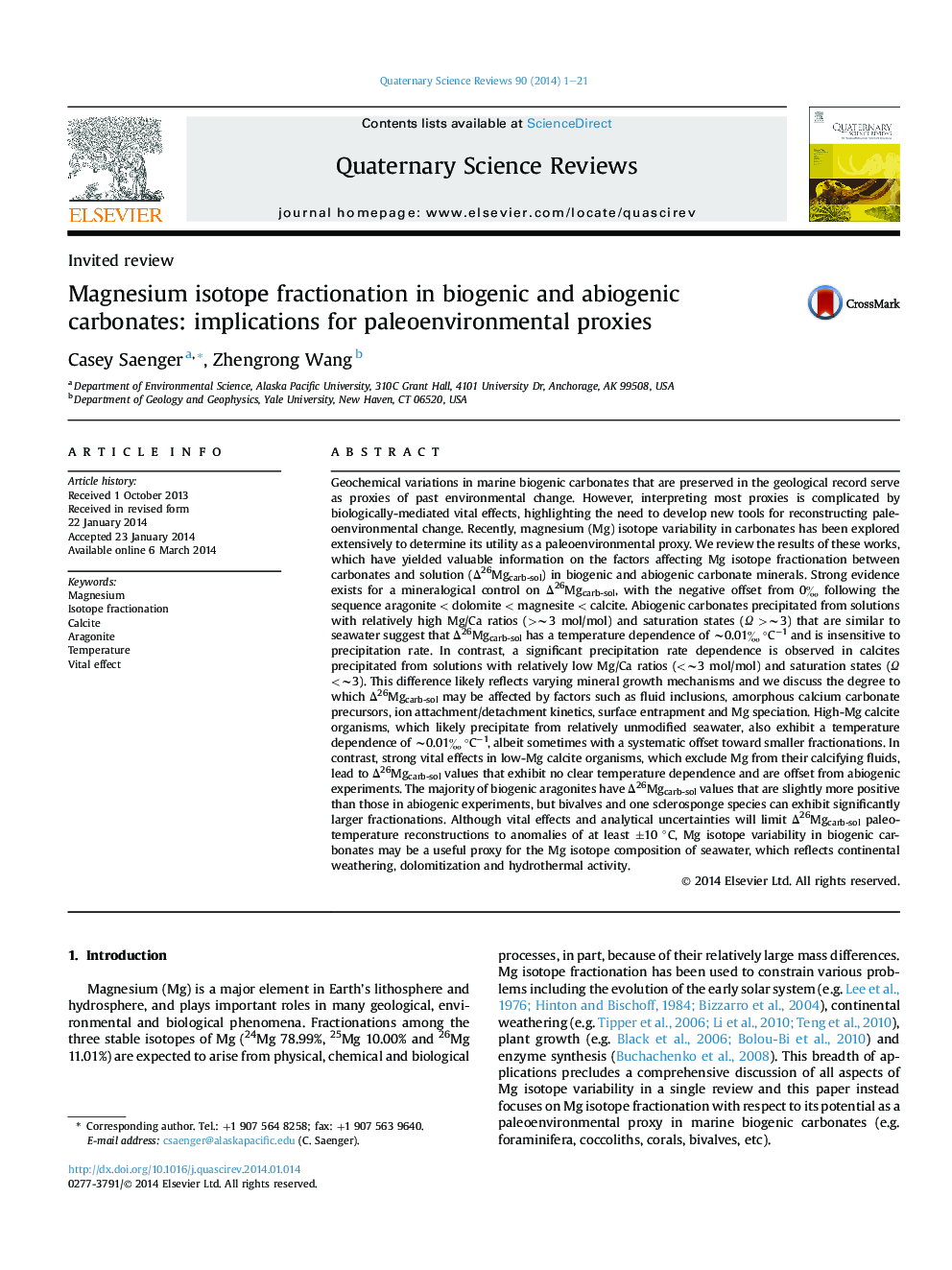| کد مقاله | کد نشریه | سال انتشار | مقاله انگلیسی | نسخه تمام متن |
|---|---|---|---|---|
| 4736543 | 1640844 | 2014 | 21 صفحه PDF | دانلود رایگان |
• There is a mineralogical control on Δ26Mgcarb-sol.
• In some cases Δ26Mgcarb-sol has a temperature sensitivity of ∼0.01‰ °C−1.
• In some cases, smaller fractionations are observed at rapid growth rates.
• Vital effects make biogenic Δ26Mgcarb-sol smaller or larger than abiogenic.
• Analytical precision limits the application of Δ26Mgcarb-sol as a proxy.
Geochemical variations in marine biogenic carbonates that are preserved in the geological record serve as proxies of past environmental change. However, interpreting most proxies is complicated by biologically-mediated vital effects, highlighting the need to develop new tools for reconstructing paleoenvironmental change. Recently, magnesium (Mg) isotope variability in carbonates has been explored extensively to determine its utility as a paleoenvironmental proxy. We review the results of these works, which have yielded valuable information on the factors affecting Mg isotope fractionation between carbonates and solution (Δ26Mgcarb-sol) in biogenic and abiogenic carbonate minerals. Strong evidence exists for a mineralogical control on Δ26Mgcarb-sol, with the negative offset from 0‰ following the sequence aragonite < dolomite < magnesite < calcite. Abiogenic carbonates precipitated from solutions with relatively high Mg/Ca ratios (>∼3 mol/mol) and saturation states (Ω >∼3) that are similar to seawater suggest that Δ26Mgcarb-sol has a temperature dependence of ∼0.01‰ °C−1 and is insensitive to precipitation rate. In contrast, a significant precipitation rate dependence is observed in calcites precipitated from solutions with relatively low Mg/Ca ratios (<∼3 mol/mol) and saturation states (Ω <∼3). This difference likely reflects varying mineral growth mechanisms and we discuss the degree to which Δ26Mgcarb-sol may be affected by factors such as fluid inclusions, amorphous calcium carbonate precursors, ion attachment/detachment kinetics, surface entrapment and Mg speciation. High-Mg calcite organisms, which likely precipitate from relatively unmodified seawater, also exhibit a temperature dependence of ∼0.01‰ °C−1, albeit sometimes with a systematic offset toward smaller fractionations. In contrast, strong vital effects in low-Mg calcite organisms, which exclude Mg from their calcifying fluids, lead to Δ26Mgcarb-sol values that exhibit no clear temperature dependence and are offset from abiogenic experiments. The majority of biogenic aragonites have Δ26Mgcarb-sol values that are slightly more positive than those in abiogenic experiments, but bivalves and one sclerosponge species can exhibit significantly larger fractionations. Although vital effects and analytical uncertainties will limit Δ26Mgcarb-sol paleotemperature reconstructions to anomalies of at least ±10 °C, Mg isotope variability in biogenic carbonates may be a useful proxy for the Mg isotope composition of seawater, which reflects continental weathering, dolomitization and hydrothermal activity.
Journal: Quaternary Science Reviews - Volume 90, 15 April 2014, Pages 1–21
